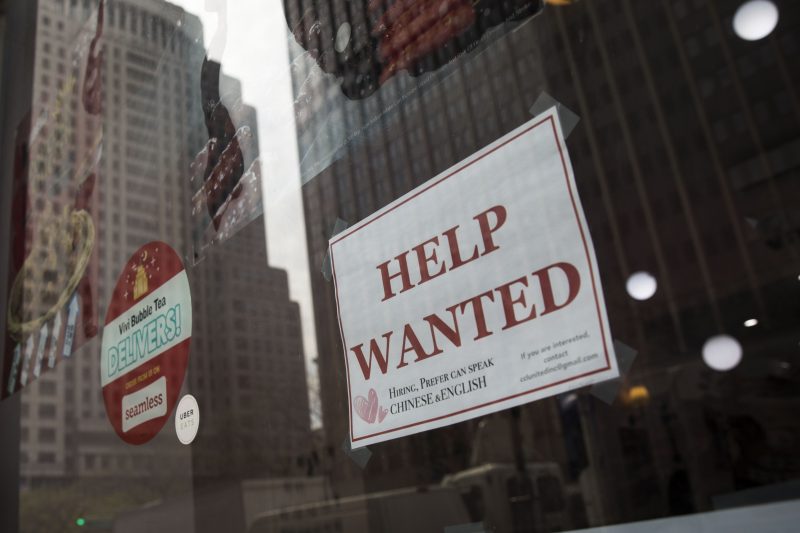US hiring slows sharply in May as trade tensions worsen
The US unemployment rate held steady at 3.6% but a shortage of workers and the trade war is weighing on hiring (Drew Angerer)
Washington (AFP) – Against the backdrop of worsening trade conflicts, US job creation slowed sharply in May, adding to evidence the economy is weakening and raising expectations the Federal Reserve could cut rates soon.
Hiring dried up in major industries and wage growth stagnated, and because job growth was worse than previously reported in March and April, hiring was essentially flat last month, the Labor Department reported Friday.
With trade conflict with China increasing and a new battle with Mexico set to begin Monday, with dire implications for a host of industries, the unexpectedly steep job slowdown in May heightened fears the world’s largest economy could be beginning to sputter.
US employers added only 75,000 net new positions last month, less than half the 180,000 economists had been expecting, with sudden drops in hiring in healthcare, education and construction.
The federal government payroll also shrank unexpectedly by 15,000 workers.
The unemployment rate held steady at 3.6 percent, matching April’s level, which was the lowest since 1969.
As he eagerly pursues an aggressive and unorthodox trade agenda, President Donald Trump has been comforted that vigorous job markets and historically low unemployment provide a buffer against retaliation in tariff battles with major trading partners that have hit the US manufacturing sector in particular.
The world’s largest economy in July will break the record for its longest-ever expansion, but economists expect it to slow a notch in 2019 and the odds of recession have also increased.
The average job gains for the past three months was 151,000 compared to the 12-month average of 196,000, signaling a slowdown in hiring, also attributed to the difficulty finding workers.
That has raised expectations the Federal Reserve will cut the benchmark interest rates this year — possibly twice and as soon as this month — to support growth after four increases in 2018.
– Sand in the gears –
Fed policymakers have sent signals in recent days they are open to easing, and are on the lookout for signs of weakness.
“These data make it easier for the Fed to ease either this month or next, if the trade tensions intensify and the stock market drops sharply,” economist Ian Shepherdson of Pantheon Macroeconomics said in a research note.
Joel Naroff was more succinct: “The lean, mean job machine has sand in its gears.”
A weakening economy also could unnerve Republicans ahead of hotly contested elections in 2020.
Job creation tumbled in the goods-producing and service sectors, while industries such as construction, transportation and temporary help, which had previously been reliable sources of new jobs, hit a rough patch.
Meanwhile, average hourly wages rose 0.2 percent compared to April to $27.83, disappointing economists who had hoped for slightly stronger gains.
Over the last 12 months, wage gains were 3.1 percent and have been at or above three percent for 10 straight months, outpacing increases in consumer inflation but confirming the lack of any upward trend.
With employers continuing to complain of a dearth of available and qualified workers, the size of the labor force was unchanged.
The disappointing number encouraged Wall Street, however, where stocks turned higher at the open as investors believed the weak result raised the chances of a Fed interest rate cut.
“If the Fed wants evidence the trade dispute has rattled business confidence enough to cause economic problems, a net unchanged employment report with fading wage pressures should do the trick,” Chris Low of FTN Financial said in an analysis.
Disclaimer: Validity of the above story is for 7 Days from original date of publishing. Source: AFP.


